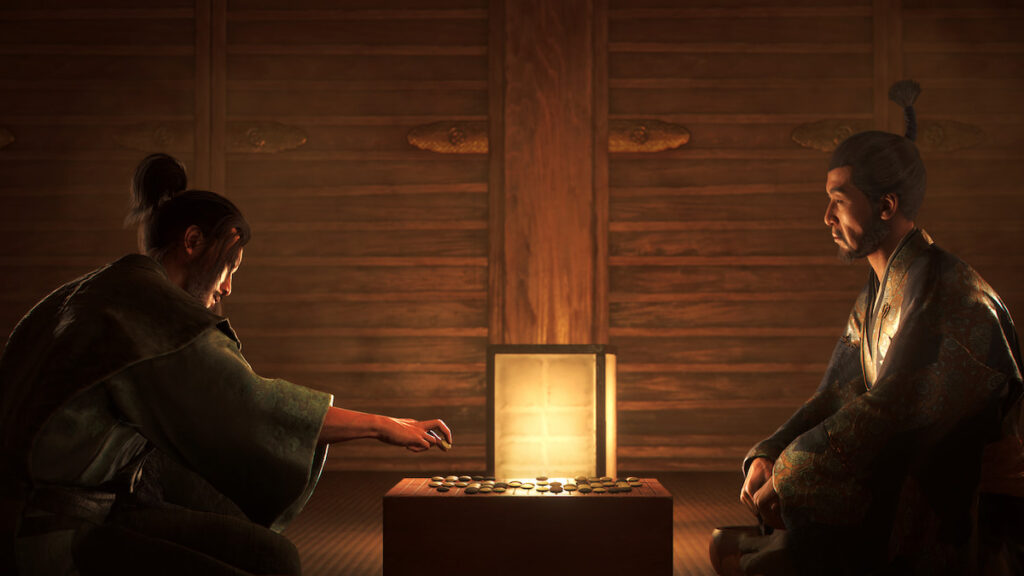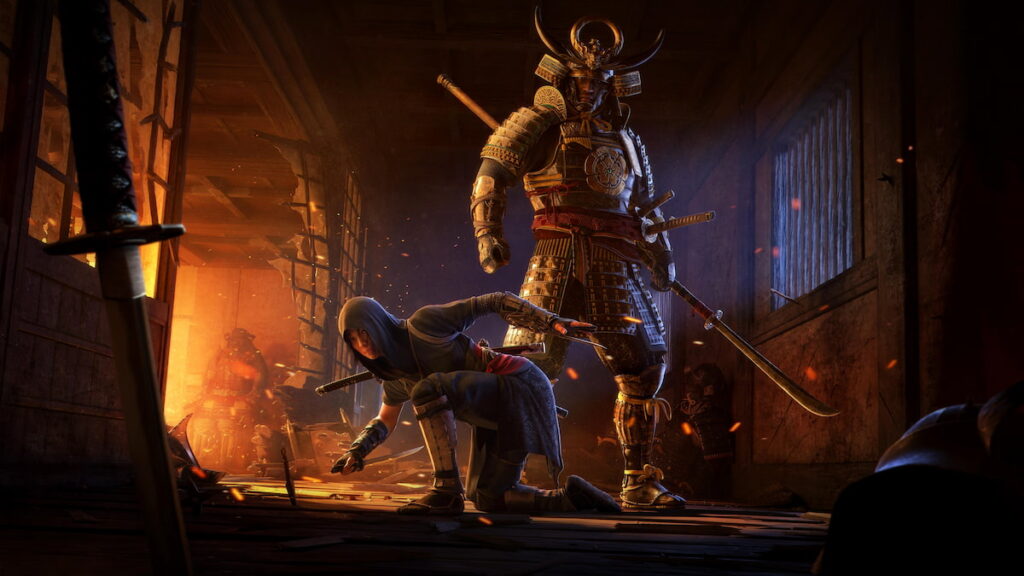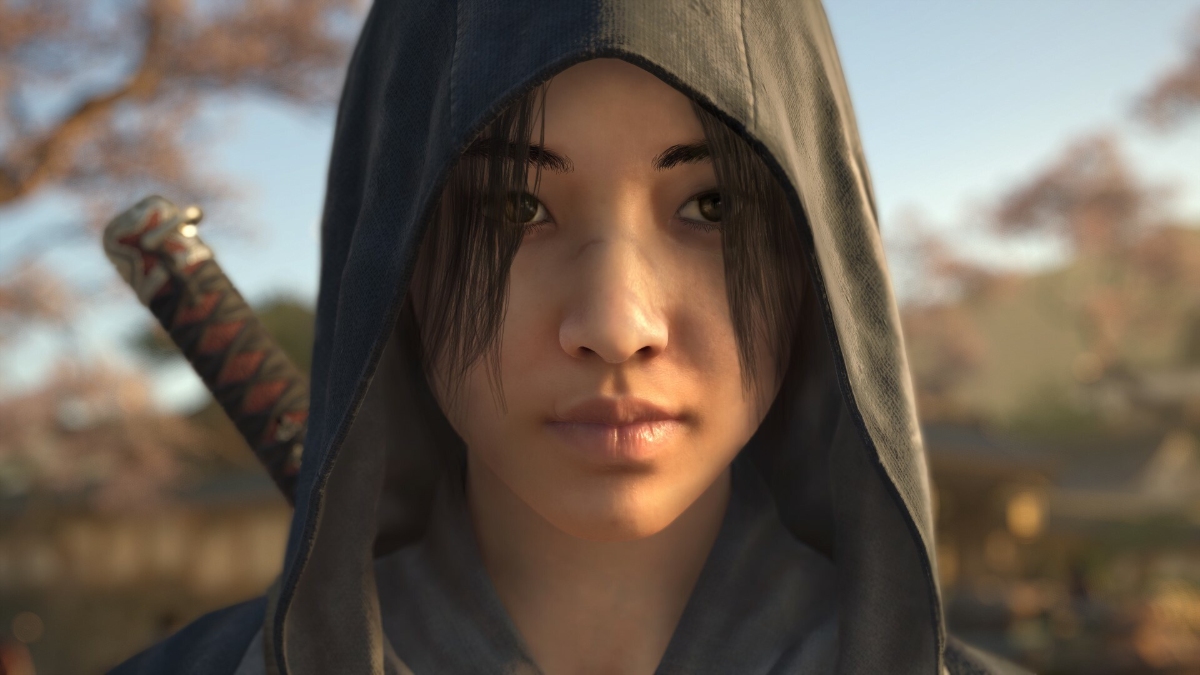Skip To...
Picture, if you will, a cool autumn day back in 1998. You just came home from school, and you aren’t spending the afternoon with the latest Dragon Ball Z episode or your geography homework. No way, not on this day, because on this fine day, Rikimaru must infiltrate and assassinate Echigoya, a scoundrel and wealthy noble who has to go for the good of the people. It might be confusing why I’m waxing poetic about Tenchu, but stick with me. My extended preview time made it clear that Assassin’s Creed Shadows has a fair bit in common with the legendary stealth ninja series.
Dreaming of a Unified Japan

By now, unless you’ve been living under a very mossy-covered rock, you know that Shadows takes the dual protagonist setup of the latest AC entries and elevates it extensively. A samurai and a ninja. Yasuke and Naoe, a legacy of bushido and of Ubisoft’s very own franchise. Contrary to some bigots and online chuds’ narrow-minded beliefs, Yasuke is very much a samurai who served by Nobunaga Oda’s side before he fell. Naoe is a fictional daughter of real-life Iga Jonin Fujibayashi Nagato. This dynamic pair is brought together during Nobunaga’s siege of Iga province, and their journey together grows and develops from then on.
As each of their backstories and fighting styles would suggest, these two play very differently from one another. But beyond the apparent differences of size versus speed and brawling versus stealth, much of the differences are philosophical and speak to the two very distinct ‘eras’ of Assassins Creed. The original set of titles in the series featured extensive stealth and a focus on lean game design and tight controls as you took out targets using the hidden blade, key weapon, and trademark of the Assassin Brotherhood. Think of Altair, Ezio, and the like. After some time away, the series returned with a much more ambitious size and scope, trading away some of the lean, stealth focus to become sprawling period-piece action RPGs with a dose of AC lore sprinkled throughout.
Mighty Samurai and the Cunning Ninja
Fans of Valhalla and Odyssey will find Yasuke’s playstyle familiar and easy to adjust to. Forgoing nimble stealth for sweeping and powerful attacks, Yasuke is about as subtle as kicking a grown man 20 feet through a wall. He is a bruiser and uses his size to his advantage across all facets of combat. He can face down large groups of enemies with his heavy armor and expanded health pool, and his ability to stand toe to toe with heavily armored samurai is without equal. Don’t expect to run around and use as much parkour as Yasuke since he doesn’t move nearly as well as his shinobi counterpart. Even simple tasks such as climbing basic structures can be a struggle. He is capable of sneaking, but any stealth attack he performs is loud and brutal and will frighten and alert all nearby enemies for a massive open brawl, not unlike the climactic village brawl in Takashi Miikes’s legendary film 13 Assassins.
On the contrary, Naoe is the most nimble and smooth any character has ever been in the entirety of the Assassin’s Creed lineage. She is every part the ninja you’d expect from the Iga, and she benefits from two brand-new elements: the grappling hook and the simple ability to go prone. Being able to lie down isn’t exactly the first gameplay addition you expect to be so impactful in a nearly 20-year franchise, but here we are. Like The Phantom Pain, going prone elevates the basic movement and moment-to-moment stealth opportunities. It accentuates an overhauled movement and parkour system that truly shines with Naoe. Running down a hill and diving over a table to slide into a prone position while extinguishing some lanterns near an enemy footpost feels so satisfying every time you pull it off.
Naoe also uses a grappling hook, but it comes with a bit of a learning curve. The device doesn’t just shoot out and send you hurling with laser precision and velocity to the nearest rooftop like it did in Tenchu. Instead, it needs space to take advantage of and can help you climb vertically in a pinch. Naoe is also the only real Assassin who wields the Hidden Blade, and she can use the series trademark Eagle Vision. Yasuke doesn’t have access to either of these tools, driving the point home the key differences in their unique builds and playstyles. This is where Shadows shines brightest. Yasuke feels like the best marriage of action and RPG the series has been building with these latest games, while Naoe’s agility and sheer depth of stealth options and movement create the best open-world stealth action since the Phantom Pain.
Once More, With Feeling
To round off this preview, I want to talk more about how I felt with my extended hands-on session rather than dip and dive into each new gameplay aspect or how loot is handled. Ubisoft has a pretty great blog that extensively breaks down each of these new systems. What the blog can’t tell you, though, is the feeling of lethargy or exhaustion that sits on your back as you play a series you used to love when it doesn’t quite love you back.
Whether with Yasuke or Naoe, playing Shadows gave me the nostalgia of what I felt on that cool autumn day, hunched over my PlayStation with Tenchu burning a hole through my CRT. Looking back at Tenchu now, I clearly see its flaws, along with its very outdated graphics. But back then, all I cared about was the immersion and how satisfying each stealth kill felt to pull off. I started the game as Rikimaru, then played it all over again with Ayame, and lost myself to the atmosphere and vibes. That happened all over again with Assassin’s Creed Shadows. After I started coming to grips with the movement, stealth options, and other unique mechanics, I became lost, deeply immersed in the world and engaging gameplay of Shadows. If it wasn’t for the Ubisoft rep saying my time was almost over and waking me up like it was the end of Inception. I can’t wait to experience all of Assassins Creed Shadows when it releases on March 20th, and if you’re a fan of the series, there’s more than enough to be excited about.








